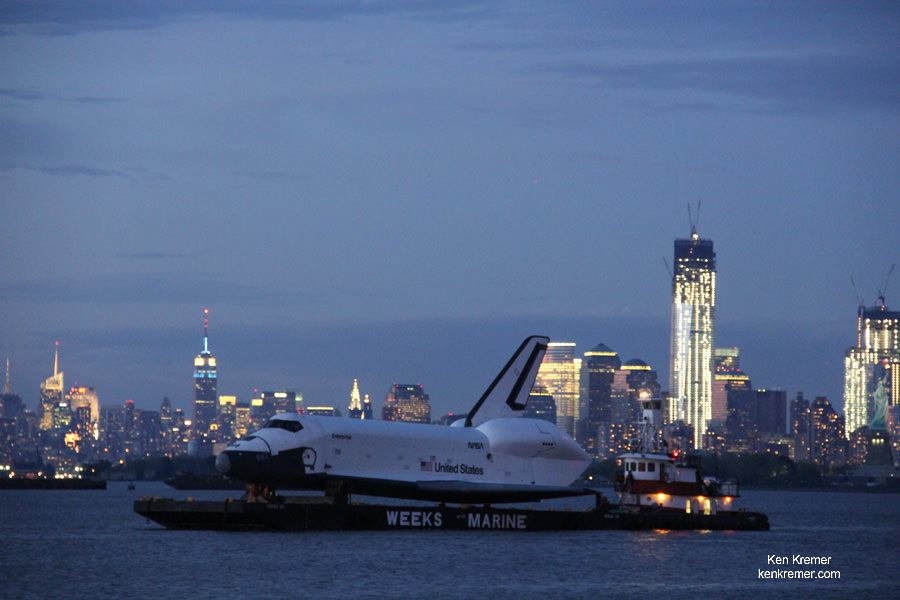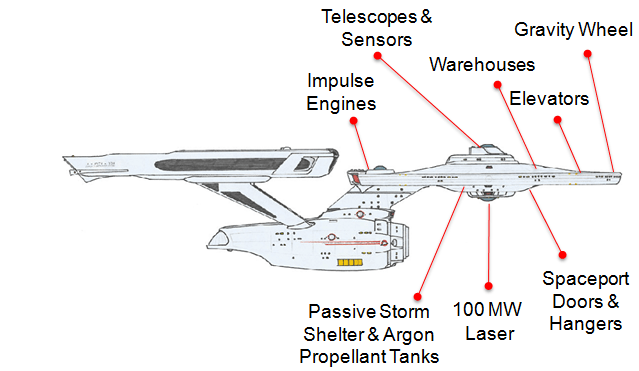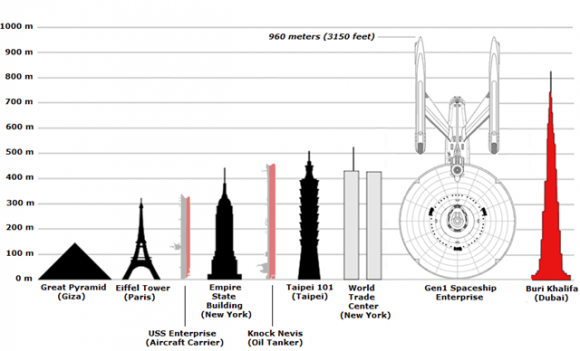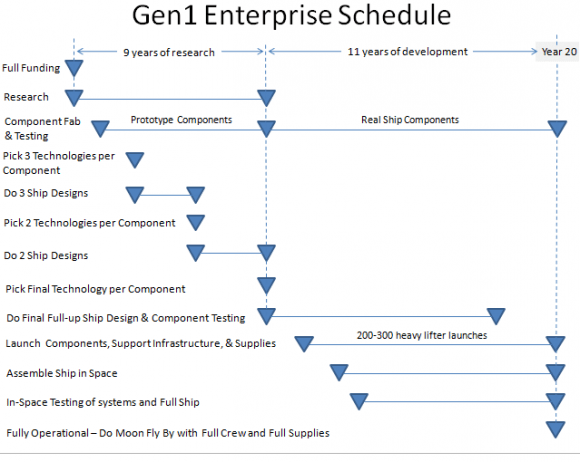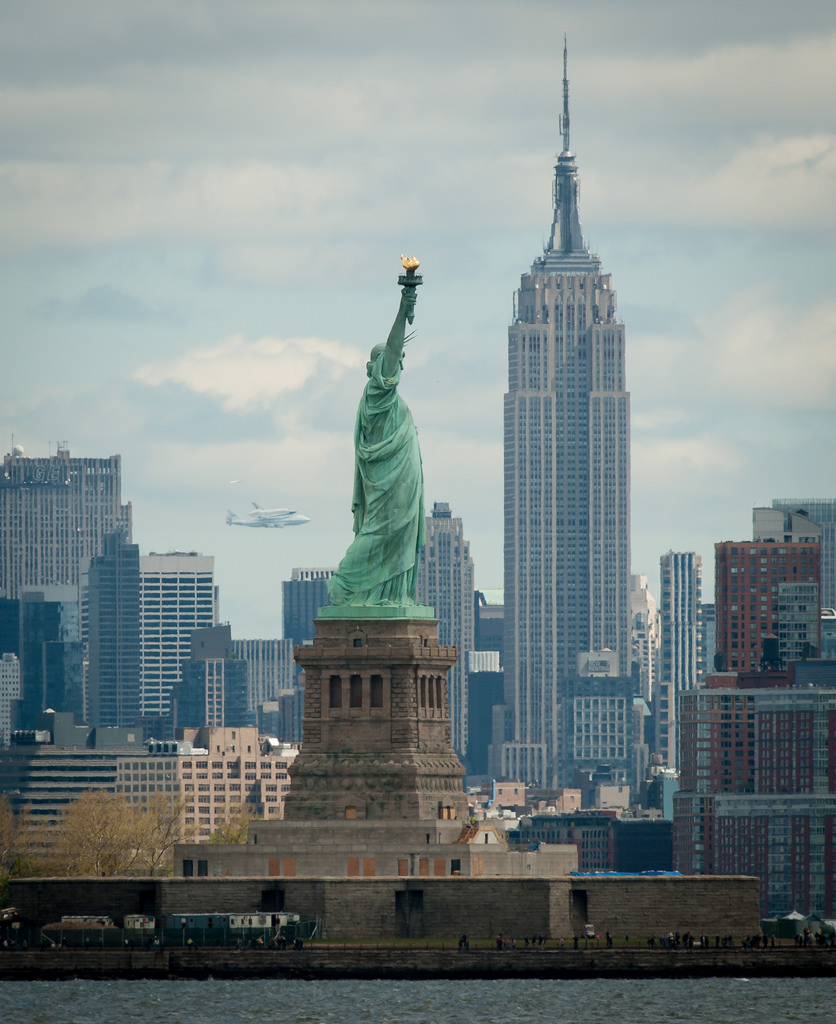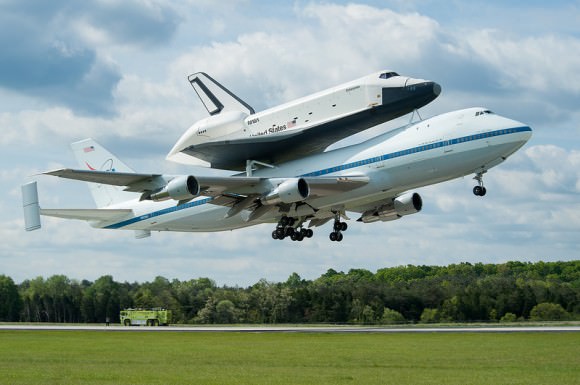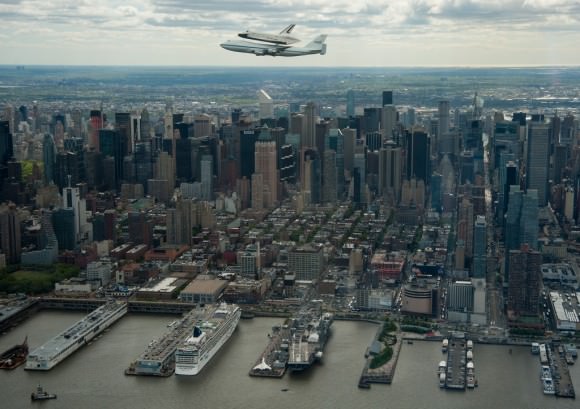[/caption]
On Sunday, June 3, throngs of New Yorkers, Jerseyites and more witnessed one of those ultra rare astronomical events – The Space Shuttle Enterprise’s Transit of the NYC Skyline !
NASA’s Space Shuttle Enterprise completed the first leg of her final voyage – a seagoing journey by barge from John F. Kennedy (JFK) International Airport across New York Harbor and to her final resting place at the Intrepid Sea, Air and Space Museum on the Hudson River on Manhattan’s West Side.
To prepare for the watery journey, Enterprise was hoisted by crane onto the Weeks Marine barge on Saturday, June 2. On Sunday, the barge with Enterprise firmly in place was moved by tugboat out of JFK and along the shores of Queens and Brooklyn. It passed by the Marine Parkway-Gil Hodges Memorial Bridge at about 3:30 p.m. and Coney Island at about 4:19 p.m.
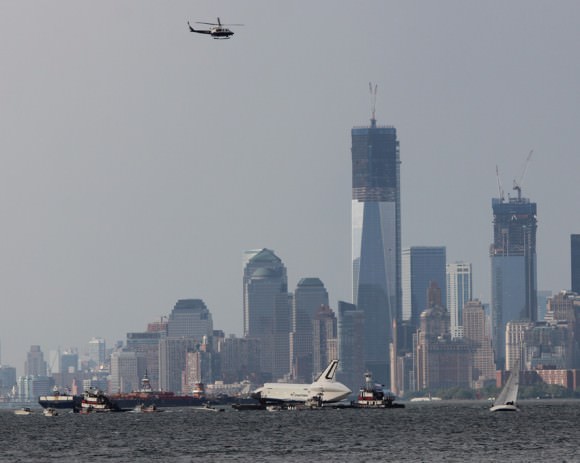
I watched Enterprise’s voyage with a big crowd of excited onlookers from a breathtaking north facing lookout on Staten Island towards southern Manhattan’s indelible skyscrapers.
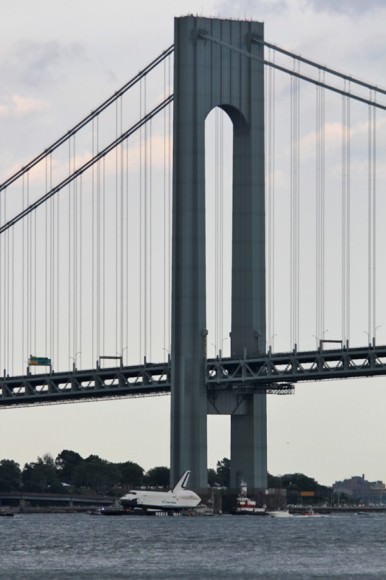
At last the orbiter approached shortly after 5 p.m. along with a small flotilla of guard and guide ships. She passed gracefully under the gorgeous and lengthy span of the Verrazano Narrows Bridge and past the humongous pylons, right on time at around 5:30 p.m. – as enormous Cruise Ships swarming with thousands of agog passengers steamed by the comparatively tiny space shuttle. Sailboats and pleasure craft also sailed close by for exquisite views.
Enterprise put on a fantastic, once-in-a-lifetime spectacle, enjoyed by the gathered multitudes all along the route and she sailed past Manhattan’s shore and skyscrapers and on towards the Statue of Liberty in New York Harbor.
Ultimately, Enterprise docked late in the evening at Port Elizabeth, Bayonne, New Jersey – at a different location than had been announced – with a direct view of the Statue of Liberty and the southern tip of the gorgeous Manhattan skyline, home to the Freedom Tower currently in the final stages of construction and now the tallest building in New York City.
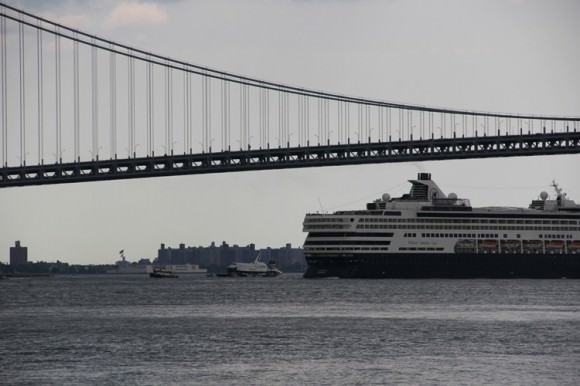
Enterprise suffered some minor damage to the wing tip during the initial stages of the journey – see separate report.
Inclement NYC weather has postponed the second part of the two part barge journey to the Intrepid museum from Tuesday tentatively to Wednesday, June 6. Enterprise will again journey past the Statue of Liberty and then up the Hudson River to her new home at the Intrepid, where she will be hoisted by crane onto the flight deck of the aircraft carrier – when the weather safely allows.
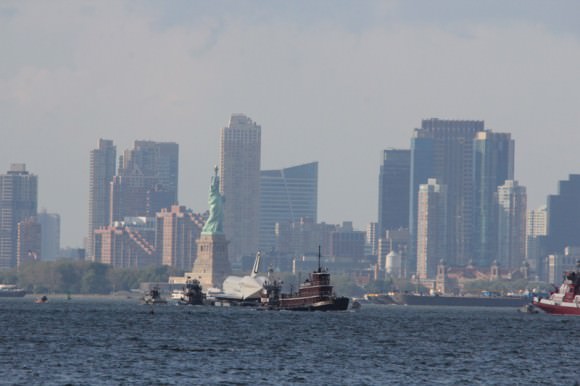
Millions of gawkers watched as Enterprise arrived in New York on April 27, loaded on the back of NASA’s specially modified 747 Jumbo Jet for her very last flight from the Smithsonian’s National Air and Space Museum at Dulles International Airport.
Read more about the April 27 flyover arrival of Enterprise in NYC, in my article here:
The Enterprise was a prototype shuttle and the first of NASA’s Space Shuttles orbiters to be built and was used in landmark approach and landing tests that paved the way for the entire Shuttle fleet and the first shuttle launch in 1981 from the Kennedy Space Center in Florida.
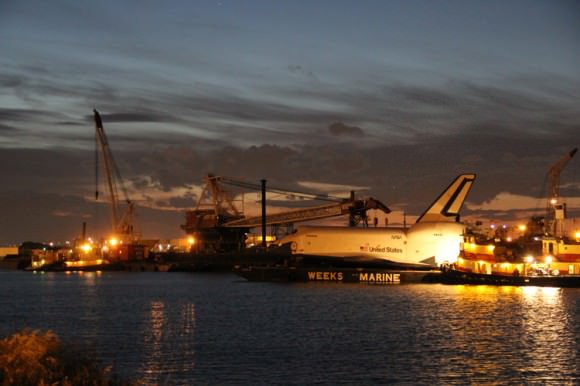
Credit: Ken Kremer
Enterprise is named after the fictional starship in the world renowned and beloved TV science fiction series – “Star Trek”.
The Intrepid museum will open Enterprise to public viewing starting in mid- July.

